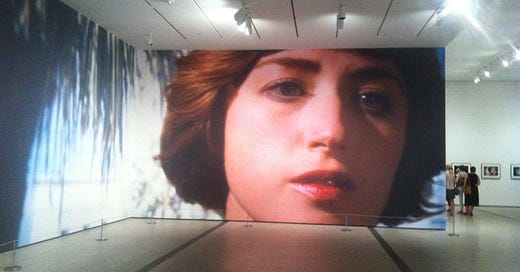I’ve been attempting to collate my photos. You know, the many thousands we now all have on our laptops, phones and in the cloud.
There are so many that jumped out at me as I scrolled on though the never-ending thumbnails but I lingered for a while over one particular shot I took at The Broad art museum, in downtown LA, around ten years ago.
This was situated at the entrance to Up Close: The Cindy Sherman exhibition, which turned out to be a fascinating study of how to insert yourself into your art.
The photo got me thinking about how much of ourselves we insert into our writing, bearing in mind that Cindy did this in the most overt way possible.
Born in 1954, the now 70-year-old is known for her conceptual portraits that focus on female identity and stereotypes.
Often using herself as the model, Cindy found fame with her Untitled Film Stills, where she transformed herself into various female archetypes from cinema. Comprising of 69 black and white photos, the images featured women from mid-20th-century Hollywood films, film noir, and European art-house cinema.
If you want to know more about her philosophy, Cindy talks about it in this 2011 interview for the Guardian.
I rather love this magpie-meets-the-author-as-main-character approach. It worked spectacularly well for her but can it work for writers?
How much of yourself do you pour into your work and when is it too much?
I’m talking about fiction obviously because you can insert the heck out of yourself into a memoir or autobiography.
But recently I wrote a chapter that was so very personal, it couldn’t possibly end up being part of a novel. Maybe some of the themes could but not in the way I’d written it. It was only when I shared it to my writers group that I realised just how personal a piece it was. That was fine but the negative was that it completely took away from the rest of the story.
Cindy once said: “I feel I'm anonymous in my work. When I look at the pictures, I never see myself; they aren't self-portraits. Sometimes I disappear.”
I don’t think you can do that as an author writing fiction.
There’s a fine line between writing what you know and writing you.
The trick, I suppose, is figuring it out.
Lisa





